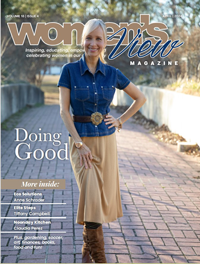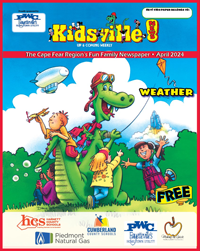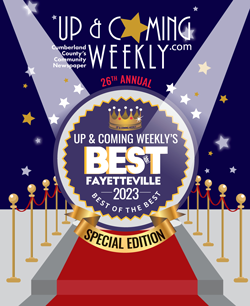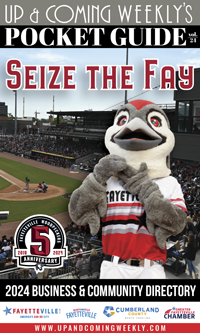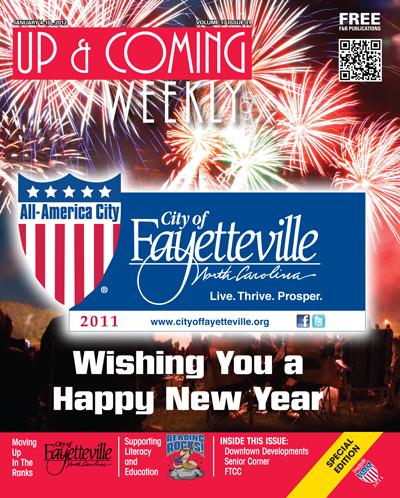 If you had visited in Fayetteville in early 1997, you would not have found the bustling historic downtown you see today. You also would not have found many of the national businesses that have located here or the numerous restaurants that dot the city’s busy commercial corridor around the mall and on McPherson Church Road.
If you had visited in Fayetteville in early 1997, you would not have found the bustling historic downtown you see today. You also would not have found many of the national businesses that have located here or the numerous restaurants that dot the city’s busy commercial corridor around the mall and on McPherson Church Road.
Instead you would have found a derelict downtown, with dark bars with names like the Seven Dwarves, the Pump House and the infamous Rick’s Lounge. The city’s downtown was just beginning to come back to life, and the first conscious attempts were made to separate the city from its derogatory nickname of Fayettenam.
Flash forward to today, and you find a community on the move. Over the past couple of years, the city has received numerous national accolades:
• 18th on the 2010 Milken Institute’s Best Performing Cities Index
• Second highest increase in the nation on per capita income in 2010
• America’s Most Pro-Military Community, Time
The results say that the community has done something right, but it hasn’t been by chance, but rather through careful planning and community involvement. That cohesive community effort paid off last summer, when Fayetteville earned its fourth designation as an All America City. The question begs to be asked: How did we get here in just 15 short years?
The city answered that question best in its application to the All America City Award” “We believe that we are worthy of a fourth award, because we are addressing the city’s challenges through civic engagement and collaboration, a community-wide effort for inclusiveness and through creative leveraging of resources to complete projects that have dramatic impact in our community.”
The city highlighted four key projects in the award:
• Working together to move Fayetteville Forward
• Improve the image of Fayetteville and embrace our military
• Address sustainability through leveraging resources for innovative economic development
• Embrace Reading Rocks! to benefit Fayetteville’s Youth
Key to Fayetteville’s transition was the involvement of the community as a whole. That is best manifested in the Greater Fayetteville Futures project, which has been ongoing since 2000. The goal of Greater Fayetteville Futures, which continues to meet today, is to bring hundreds of Fayetteville citizens together for the purposes of transforming the community’s vision into innovative projects. More importantly, the group focused on one question: How can its citizens work together to move Fayetteville and Cumberland County forward?
The initial effort was spearheaded by local business owners and the University of North Carolina’s Offi ce of Economic Development, and focused on three topics: How to diversify the economy; how to leverage the military presence to build a more dynamic local economy; and how to establish an identity that was a true refl ection of the city
.The first two topics were closely related, and work in these areas has changed the face of the community, and is continuing to build the local economy. In 2001, Fayetteville’s per-capita income was stagnant. Jobs were not being created, and the community’s brightest and talented young adults were leaving to build careers in more progressive areas.
Working with the leadership of Cumberland County, a concerted effort was made to consolidate the community’s economic development efforts to recruit traditional industries, while leveraging Fort Bragg’s presence in the community. That effort has resulted in all economic-development efforts falling under the auspices of the Fayetteville-Cumberland County Chamber of Commerce. The efforts are funded to the tune of $1 million, which is contributed by the county, the city and the Fayetteville Public Works Commission. An additional $3.6 million was contributed to the economic-development funds through private businesses and individuals, with the most recent infusion coming through the creation of the Linda Lee Allan Legacy Fund.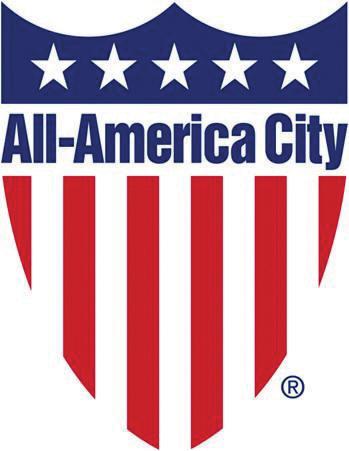
The first fruits of the community’s labor began to be seen in 2005, with the creation of the N.C. Military Business Center, which assists businesses with obtaining military and other federal contracts. To date almost 600 contracts have been awarded, which has brought $2.7 billion to the state.
2005 also saw the announcement of the BRAC commission to move the U.S. Forces Command and the U.S. Army Reserve Command to fort Bragg. That decision spurred the creation of the Partnership for Defense Innovation and the Defense & Security Technology Accelerator, with the later creating more than 150 jobs, securing 91 military contracts and infusing $31.8 million into the local economy.
In recent years, more than 600 high-tech jobs have been secured in the community through the work of the PDI, including, Booz Allen Hamilton’s opening of a corporate offi ce in the city, L3 Communications, SAID and other military contractors. Home-grown entrepreneurs include RLM, K2 and The Logistics Company.
Economic growth has continued through the investment of more than $120 million in downtown by the private and public sector, and a $113 million investment in the city through a Hope VI project, which is designed to revitalize blighted areas near the downtown area.
Fayetteville residents may be more aware of the change in the way the city is viewed, but with the construction of the Airborne and Special Operations Museum Downtown, followed by the N.C. State Veterans Park, Fayetteville has embraced its military heritage, and has leveraged it to become the military destination. Touting itself as a city of “History, Heroes and a Hometown Feeling.” Leaders felt the phrase captured the sentiments of how Fayetteville saw itself as it entered a new millennium. In 2001, America went back to war, and troops again amassed at Fort Bragg, but long gone were the bars and strip clubs that earned the city its unfortunate moniker. Instead, troops converging on the city found an emerging and growing downtown, and a community that was ready to not only support them, but embrace them.
Fayetteville didn’t just pay lip service to its new slogan, its citizens lived it. The creation of a number of organizations that served the troops happened quickly. First was the creation of the Society of Patriots, which was comprised of community leaders representing the military, local governments, businesses and cultural organizations. The group created a community-wide plan to show the nation Fayetteville’s true colors. This was quickly followed by the creation of the 31 Day Salute, a month-long celebration honoring the military, veterans and their families. With this May celebration, the city, reaffirmed the pride it has in its military history and its commitment to supporting the troops.
With BRAC came many challenges, chief of which was convincing families to make the move from Atlanta to Fayetteville. The community answered the call with the creation of the Army’s Army, a non-profit volunteer organization that worked tirelessly to educate, inform and make welcome those who would be making the move. That effort resulted in Fayetteville being named America’s First Military Sanctuary, and later being named by Time as America’s Most-Pro Military Community. Other organizations, like Fayetteville Cares ensure that Soldiers serving today are taken care of while they call Fayetteville home.
In November, Fayetteville paid homage to its Vietnam-era history by hosting a Heroes Homecoming, the nation’s first welcome home for Vietnam Veterans. The two-week event brought Vietnam vets from across the nation to the community, many of whom reveled in the changes to the city, while affectionately recalling their time here.
At the heart of all of these improvements has been the involvement of local citizens not only in Fayetteville Futures or in America’s Army or in packing care packages for the troops, but in creating a vibrant community that is alive with arts and culture, that embraces its green spaces as much as it does its businesses and that has found a way of keeping its most precious resource — its children involved, active and returning to the city to pursue their careers following the completion of their education.
Fayetteville has come a long way in the past 15 years, and city leaders are continuing to craft a vision for a vibrant future, but they are the fi rst to acknowledge it takes the work of the entire community to continue the momentum. Fayetteville Mayor Tony Chavonne probably said it best in an opinion piece that he wrote to launch the Greater Fayetteville Futures initiative:
“Let’s agree to look back one day and say that 2001 was the time when we rolled up our sleeves and worked together to improve our community’s economic health, to restore our rightful place as an economical infl uence in the region and the state and to build a stronger economy and better life for everyone who lives and works here.”

 How to resolve AdBlock issue?
How to resolve AdBlock issue? 





